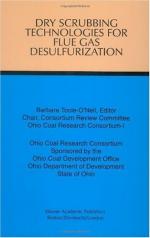|
This section contains 551 words (approx. 2 pages at 300 words per page) |

|
Flue-gas scrubbing is a process for removing oxides of sulfur and nitrogen from the waste gases emitted by various industrial processes. Since the oxides of sulfur and nitrogen have been implicated in a number of health and environmental problems, controlling them is an important issue. The basic principle of scrubbing is that flue gases are forced through a system of baffles within a smokestack. The baffles contain some chemical or chemicals that remove pollutants from these gases.
A number of scrubbing processes are available, all of which depend on the reaction between the oxide and some other chemical to produce a harmless compound that can then be removed from the smokestack. For example, currently the most common scrubbing reaction involves the reaction between sulfur dioxide and lime. In the first step of this process, limestone is heated to produce lime. The lime then reacts with sulfur...
|
This section contains 551 words (approx. 2 pages at 300 words per page) |

|


